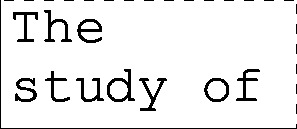

Biologists studying organisms on the microscopic scale will find these scientific flash cards helpful
There are 23 flash cards in this set (4 pages to print.)
To use:
1. Print out the cards.
2. Cut along the dashed lines.
3. Fold along the solid lines.
Sample flash cards in this set:




| Questions | Answers |
|---|---|
| What is microbiology? | The study of small organisms (Things you need a microscope to see) |
| What is ology mean? | The study of |
| What is micro mean? | Small |
| What is bio mean? | Living organism |
| What are the 6 categories of Microbes? | 1)Bacteria 2)Viruses 3)Fungi 4)protozoa 5)Algae 6)Prions |
| What is bacteria? | Prokaryotic; small and simple in structure, have no membrane bound organelles |
| What are protozoa? | Eukaryotic cells; aquatic life (pond life) |
| What are viruses? | (A)cellular-or not cellular-obligate intracellular parasites(intra-must; cellular-inside cells; parasites-living off another cell) |
| What are algae? | Eukaryotic and photosynthetic (make food from light) (pond scum) |
| What are Fungi? | (yeasts, molds, mushrooms)- Eukaryotic cells, large with complex structures, have membrane bound organelles |
| What are prions? | Infectious proteins (cause disease; ex: mad cow disease) |
| What does pathogenic mean? | (Path-disease, genic-to create) Disease causing organisms (Less than 1% of microbes are pathogenic) (Over 99% are non-pathogenic) |
| What is Indigenous micro flora (AKA normal flora)? | (Indigenous- original life, micro-small, flora-growing things)- The microbes that normally inhabit a healthy human body. |
| What are Saprophytes? | Microbes that live off (eat) dead material |
| What are opportunistic pathogens? | These are microbes that normally do not cause disease, however if given the opportunity, can cause disease. |
| What are decomposers? | Important in allowing life to exist on earth (These microbes eat dead materials (Plants, insects, animals, fungi) and convert them into nutrients that plants can use to grow. |
| What are the 2 main types of Opportunistic pathogens? | 1) Our normal flora organisms 2)Super weak pathogens that can only infect really immune compromised people (HIV, Cancer) |
| What is an example of normal flora? | Some people carry streptococcus pneumonia in their upper respiratory tract, they are not sick. This opportunistic pathogen can cause: pneumonia, sinusitis, bronchitis, otitis media(ear infection) |
| What are the 2 main mechanisms on how microbes cause disease? | 1) Microbial infection 2) Microbial intoxication |
| What is infection? | When the growth of the organism results in damage and disease |
| What is Microbial infection? | The growth of the microbe IN the host's body is the cause of tissue destruction and disease. |
| What is colonization? | When microbes grow in or on a host but do not cause disease |
| What is Microbial Intoxication? | The microbe grows somewhere and releases a toxin (a poisonous molecule) that when in the hosts body causes that damage (The toxin causes the disease). Many times the toxin is made in a food product than consumed (a form of food poisoning usually short acting after consumption) |